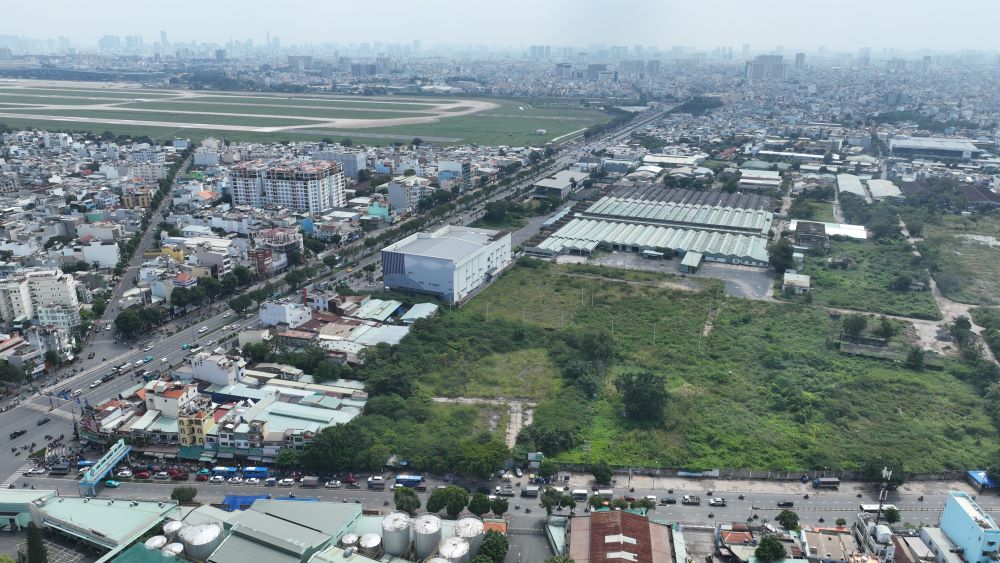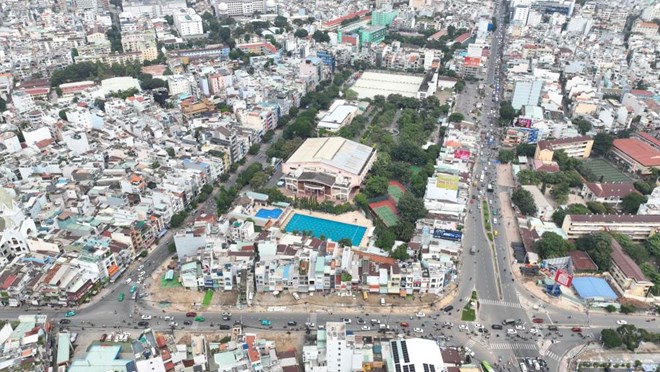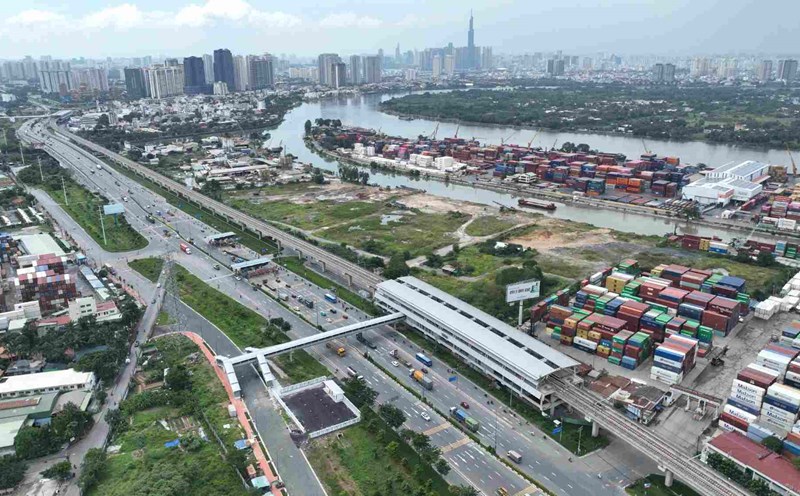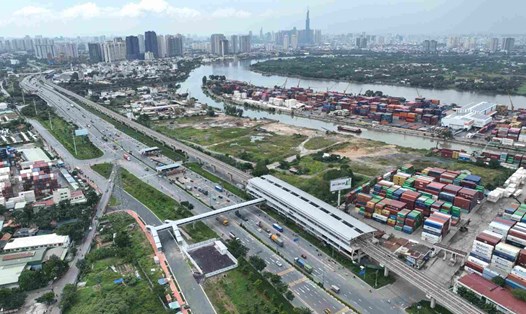The above information was announced by Mr. Nguyen Anh Tuan - Head of the Department of Technical Infrastructure Management (HCMC Department of Construction) at the workshop "Solutions for implementing urban development models according to the orientation of public transport (TOD) in HCMC", on February 25.
Speaking at the workshop, Vice Chairman of the Ho Chi Minh City People's Committee Bui Xuan Cuong said that the National Assembly has passed Resolution 188 on piloting a number of specific mechanisms and policies, especially to develop the urban railway network system in Hanoi and Ho Chi Minh City.
By 2035, Ho Chi Minh City plans to complete 355km of urban railway. In the Project to adjust the general planning of Ho Chi Minh City to 2040, with a vision to 2060, the city has planned many areas for TOD development.
At the end of 2024, Ho Chi Minh City announced a plan to deploy 11 TOD areas along metro lines and Ring Road 3, taking advantage of the special mechanism from Resolution 98.
The TOD model is expected to maximize land value around stations, creating a source of capital to reinvest in transport infrastructure. At the same time, TOD forms compact urban areas at key intersections, thereby increasing the number of passengers for the public transport system.

Mr. Phan Cong Bang - Head of the Ho Chi Minh City Urban Railway Management Board (MAUR), said that the urban railway development roadmap according to Resolution 188 and the TOD model is having many advantages thanks to special mechanisms such as bidding and construction consulting.
"TOD associated with urban railways helps speed up progress, shortening implementation time. Typically, Metro Line 2 has completed site clearance and is ready to develop according to the TOD model" - Mr. Bang said.
According to Mr. Nguyen Anh Tuan - Head of the Department of Technical Infrastructure Management (Ho Chi Minh City Department of Construction), research shows that the city has more than 60,000 hectares of potential land for TOD development.
Of which, about 32,000 hectares are highly feasible agricultural land and vacant land, 9,000 hectares are production land and land for conversion to function, the remaining 23,000 hectares are located in existing residential areas or areas encouraged for development.
One of the major challenges in developing TOD in Ho Chi Minh City is the mechanism for land acquisition and determination of land value. The city is researching and learning from international experience to apply specific policies and promote the urban railway network.
The solution is to pilot implementation at some locations, thereby adjusting the mechanism accordingly. At the same time, it is necessary to reasonably divide the development period, mobilize social resources and reorganize the planning around the station, adjust land use functions to optimize exploitation efficiency.

Dr. Nguyen Hoang Tung - Deputy Head of TOD Group (Green Infrastructure and City Program - GCIP), said that a complete TOD model must go through planning, design, investment, construction and operation steps, with close connection between railways and urban areas.
According to Mr. Tung, the legal framework and integrated planning are important foundations. At the same time, it is necessary to encourage public-private partnership (PPP) to mobilize capital, reduce risks, and combine the mechanism of collecting value added from land to reinvest in infrastructure.
However, the major obstacle for TOD is the complex institution, which can cause the project to be behind schedule and over budget. With the ambitious goal of Ho Chi Minh City, Mr. Tung proposed a methodical TOD planning according to the metro corridor, focusing on each station with a flexible design, creating urban identity instead of Forming.











